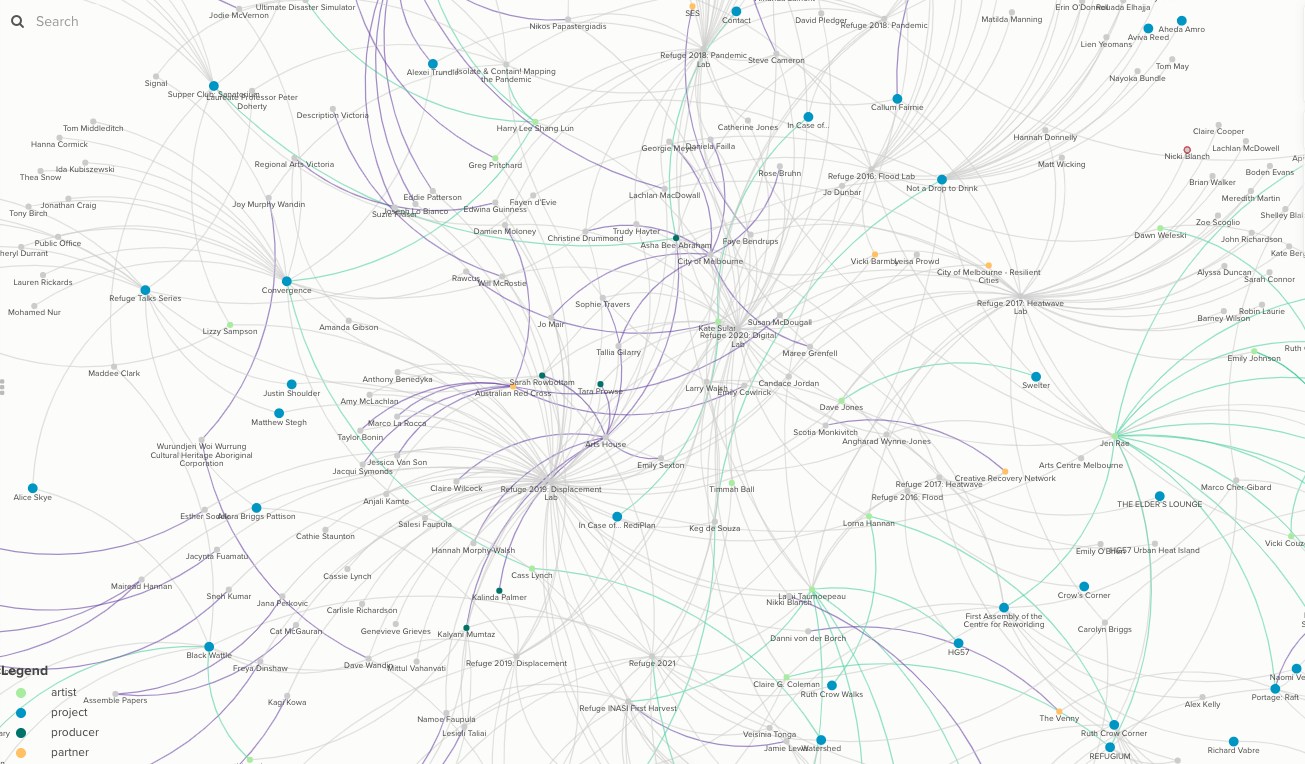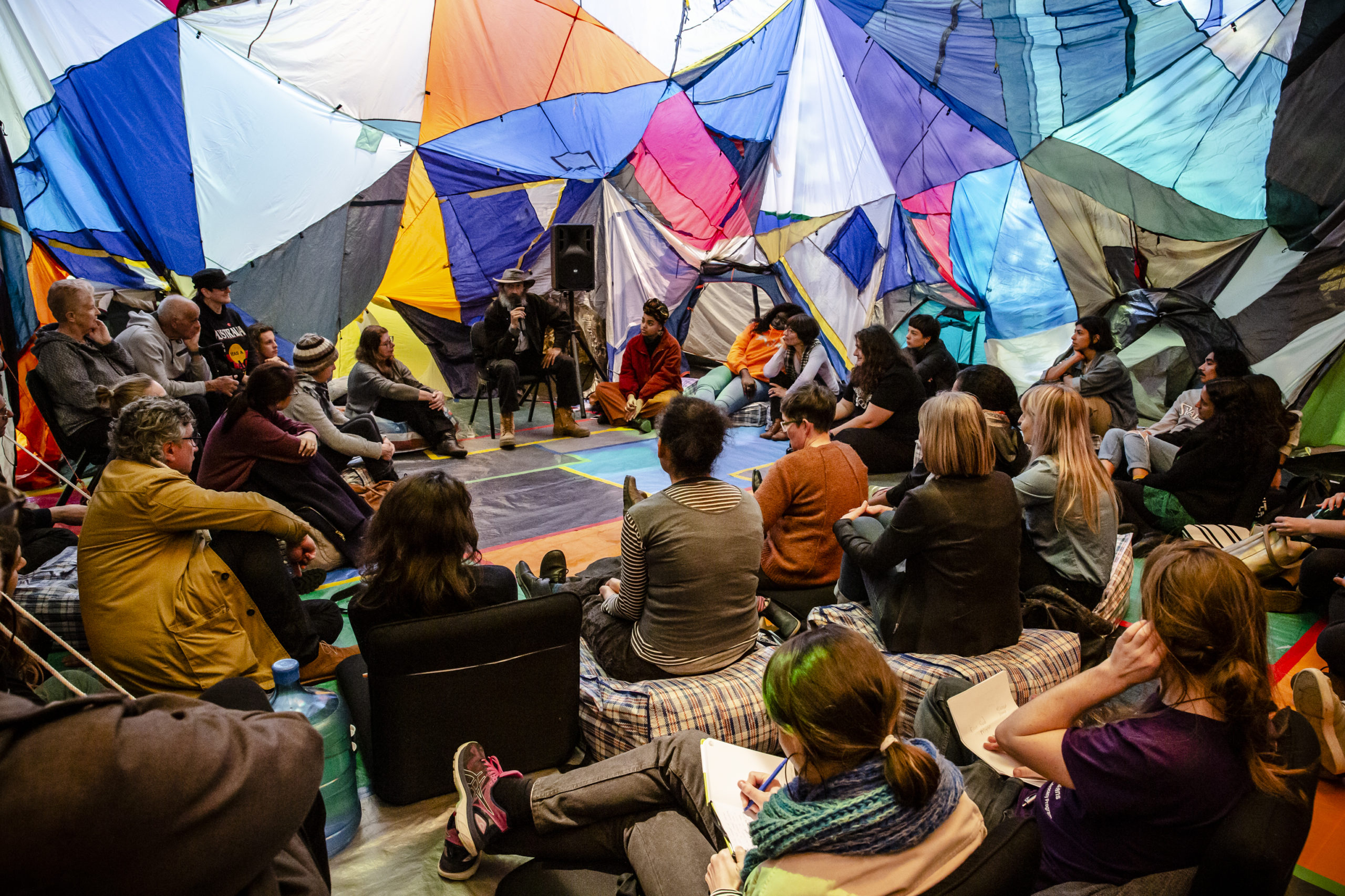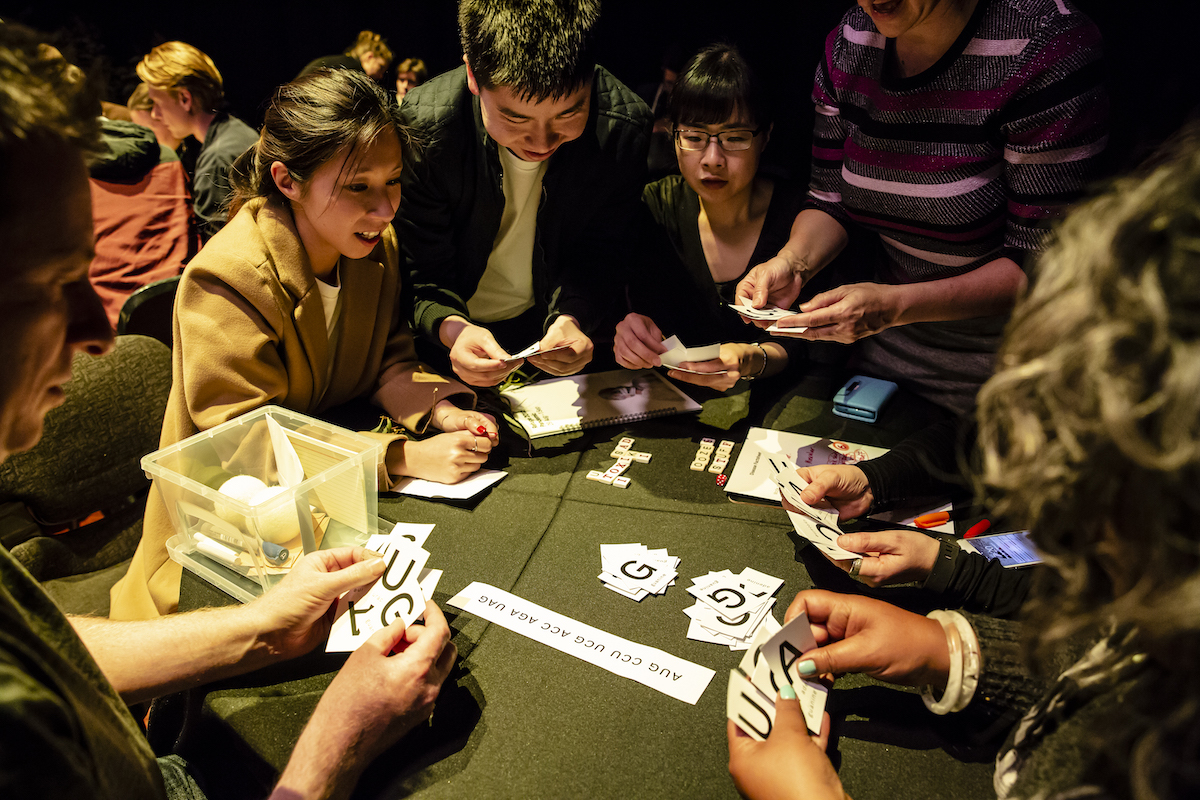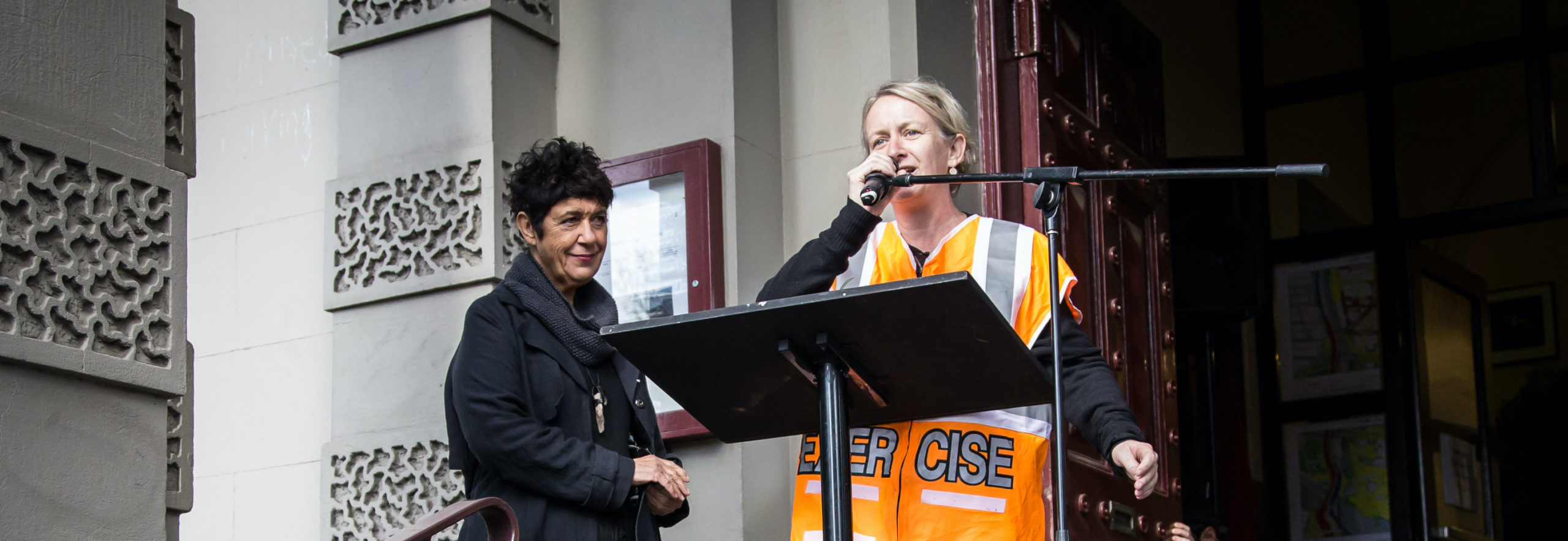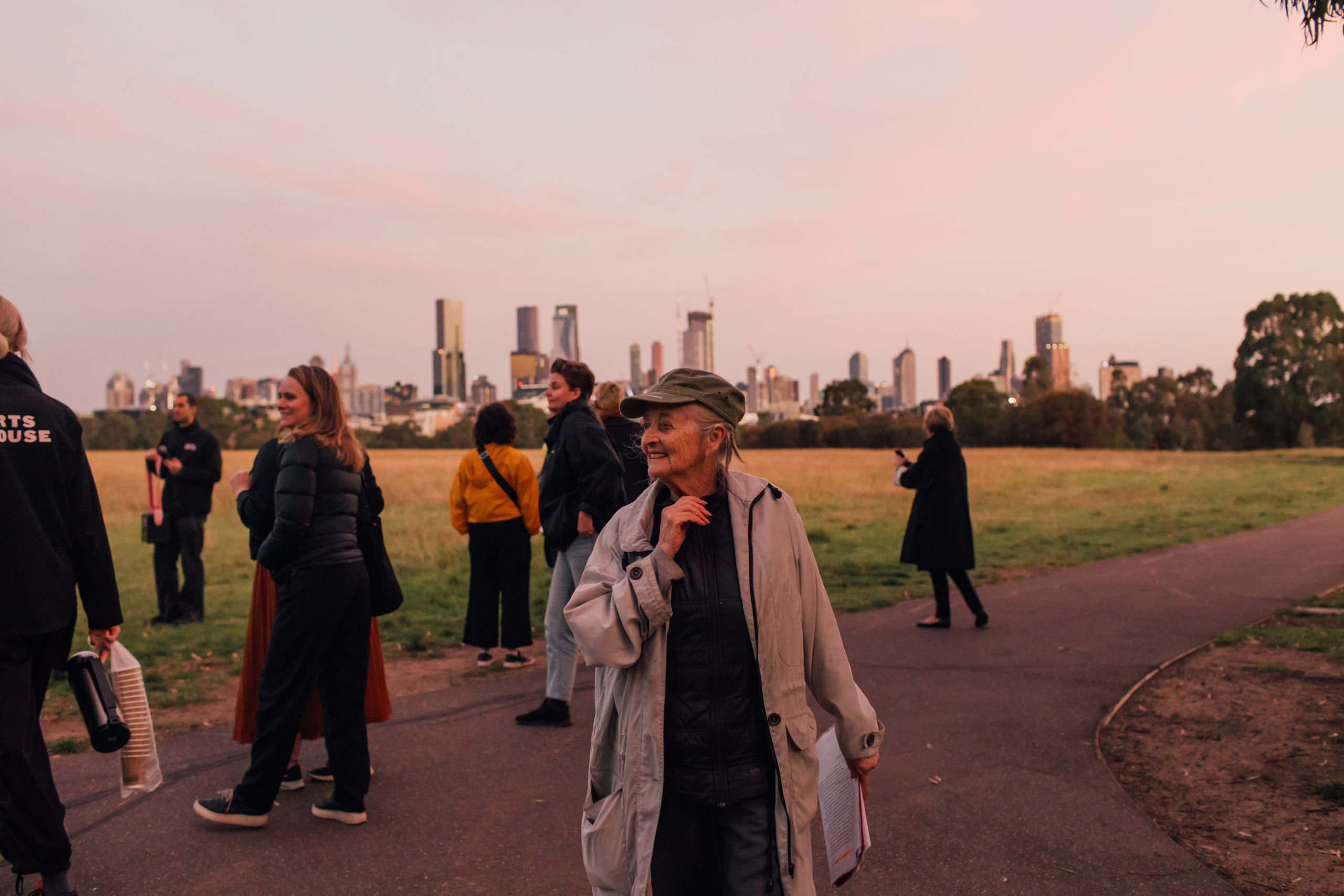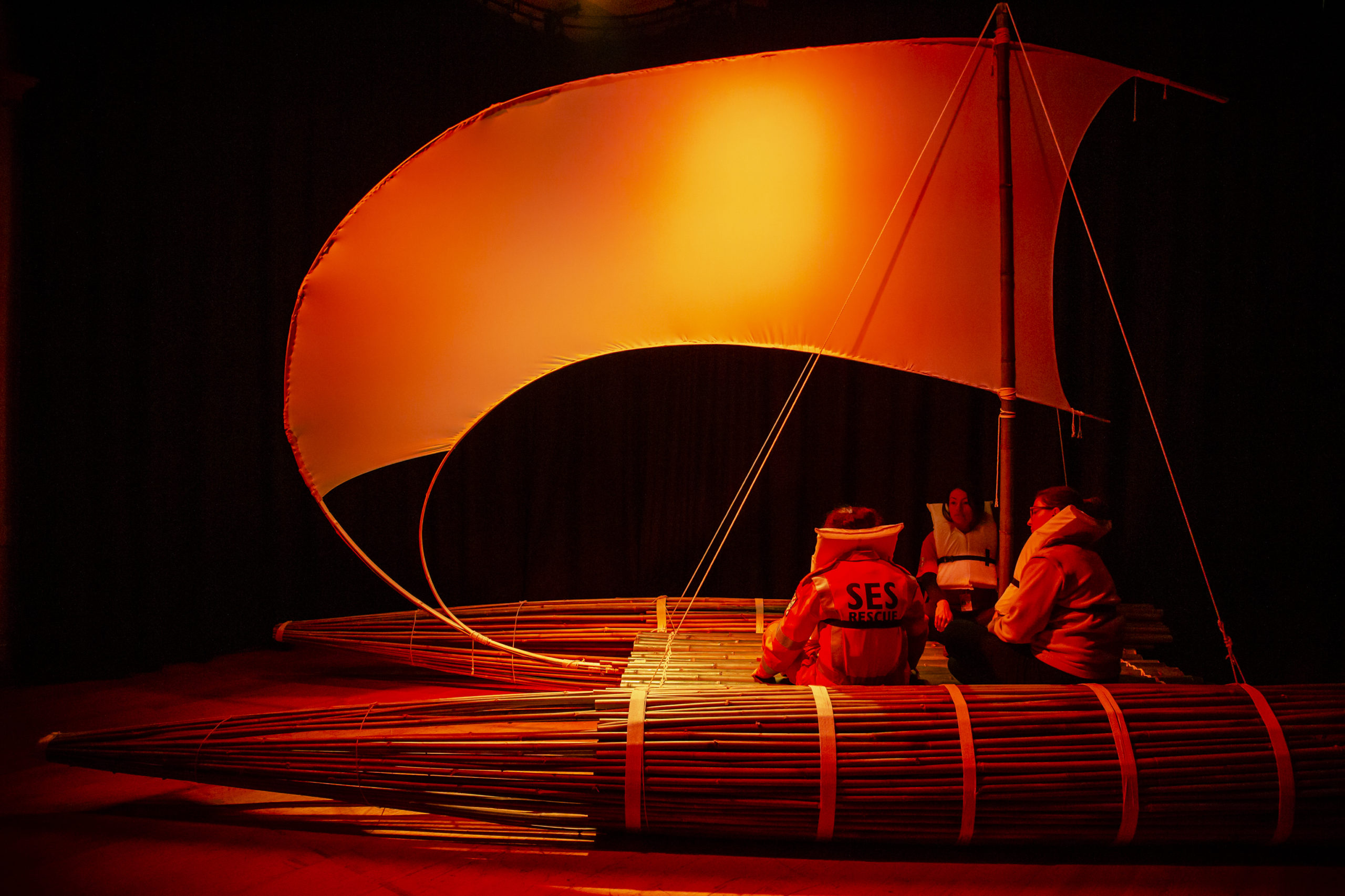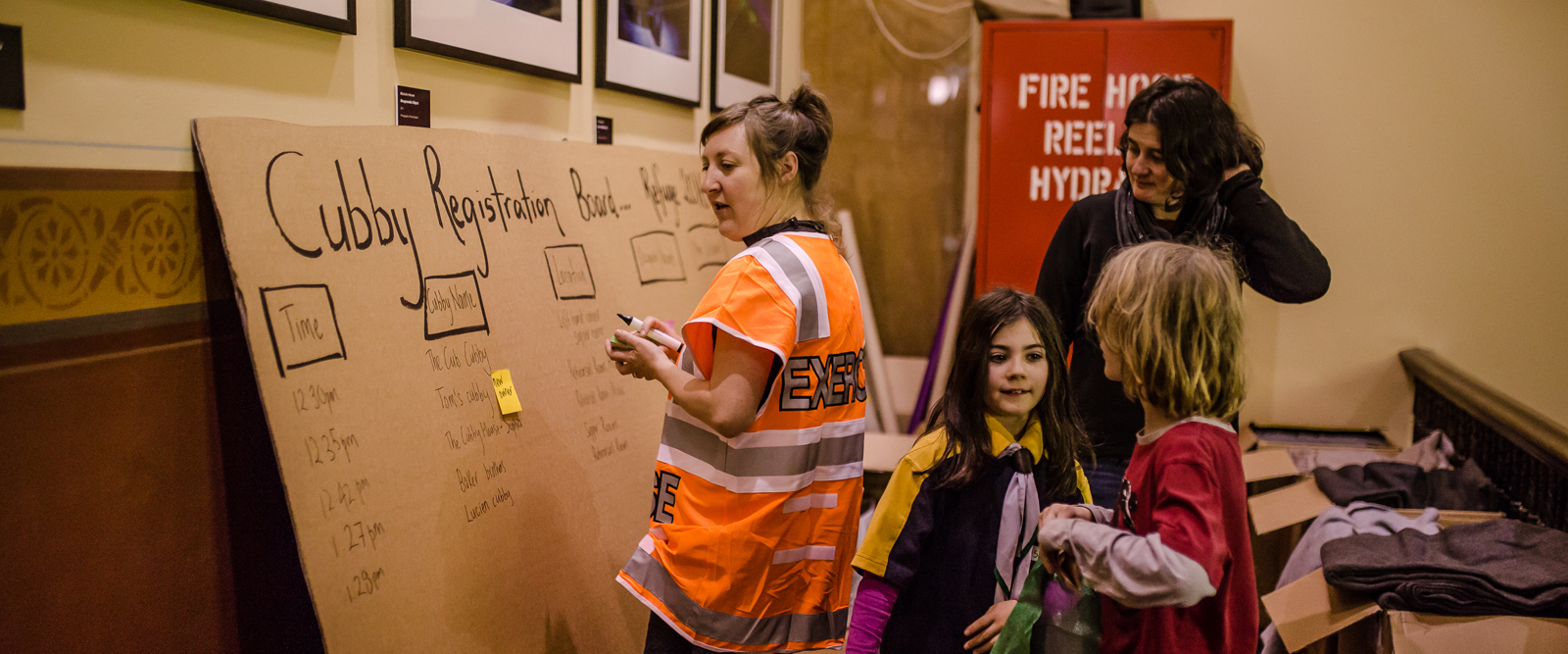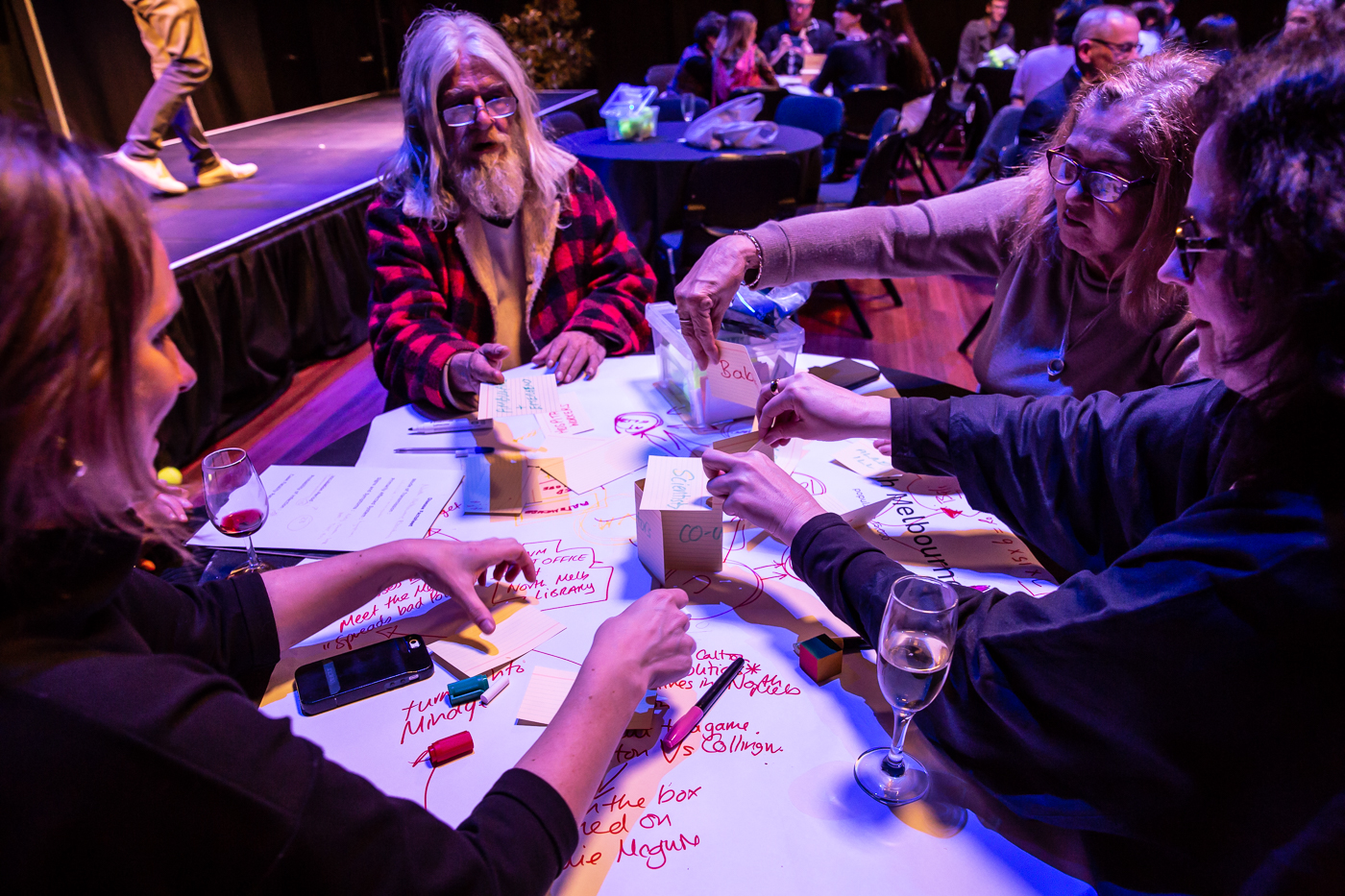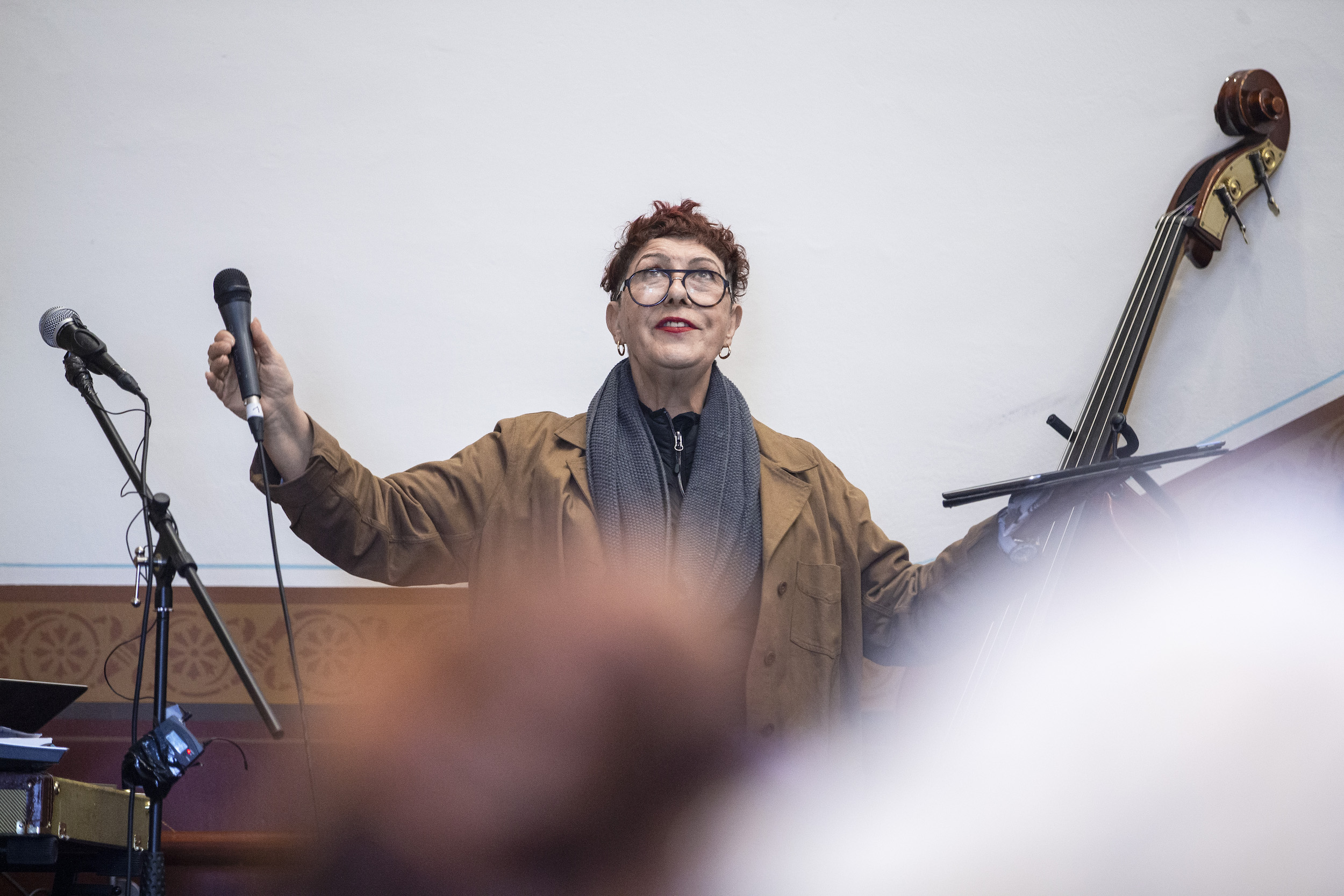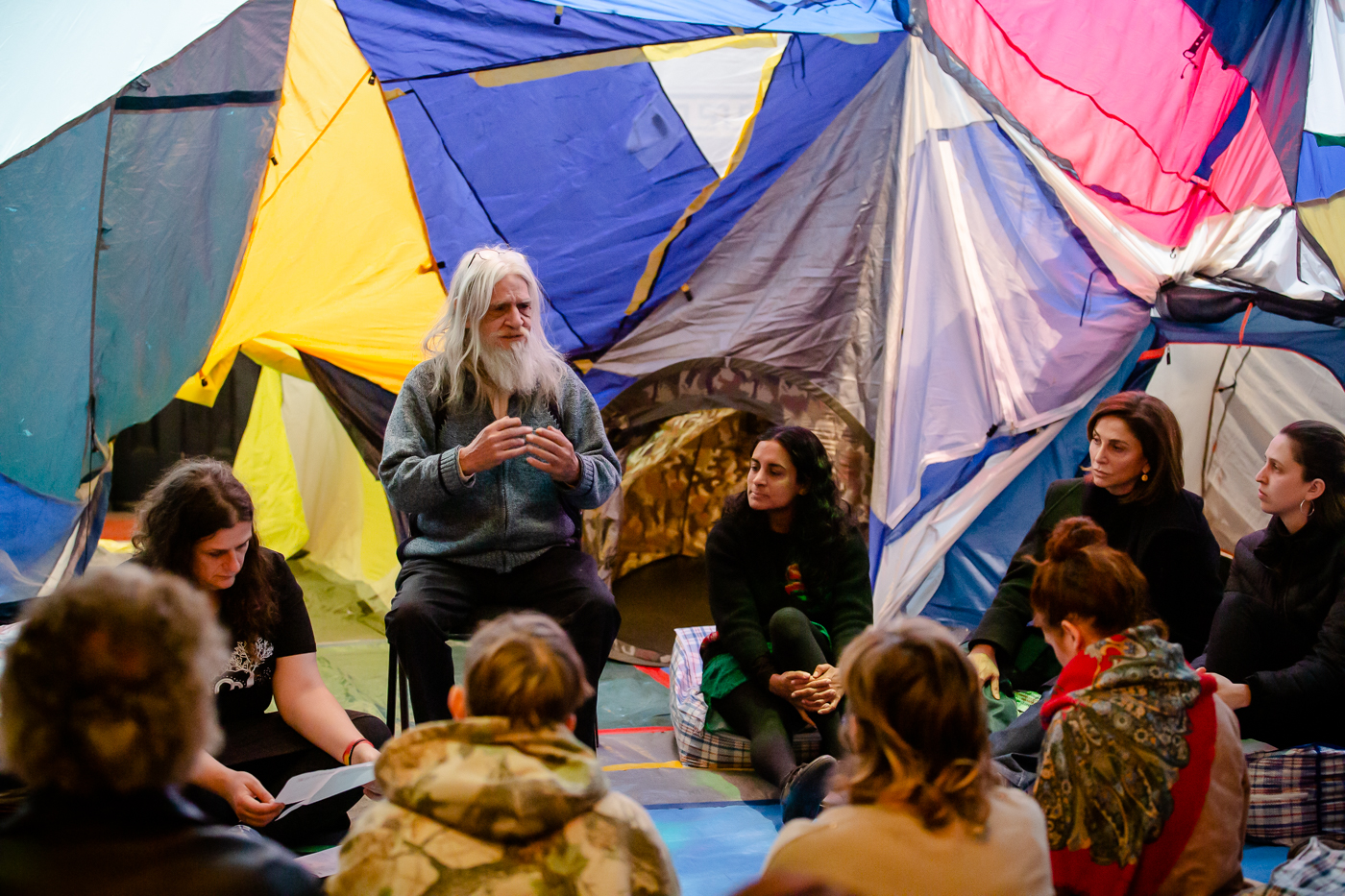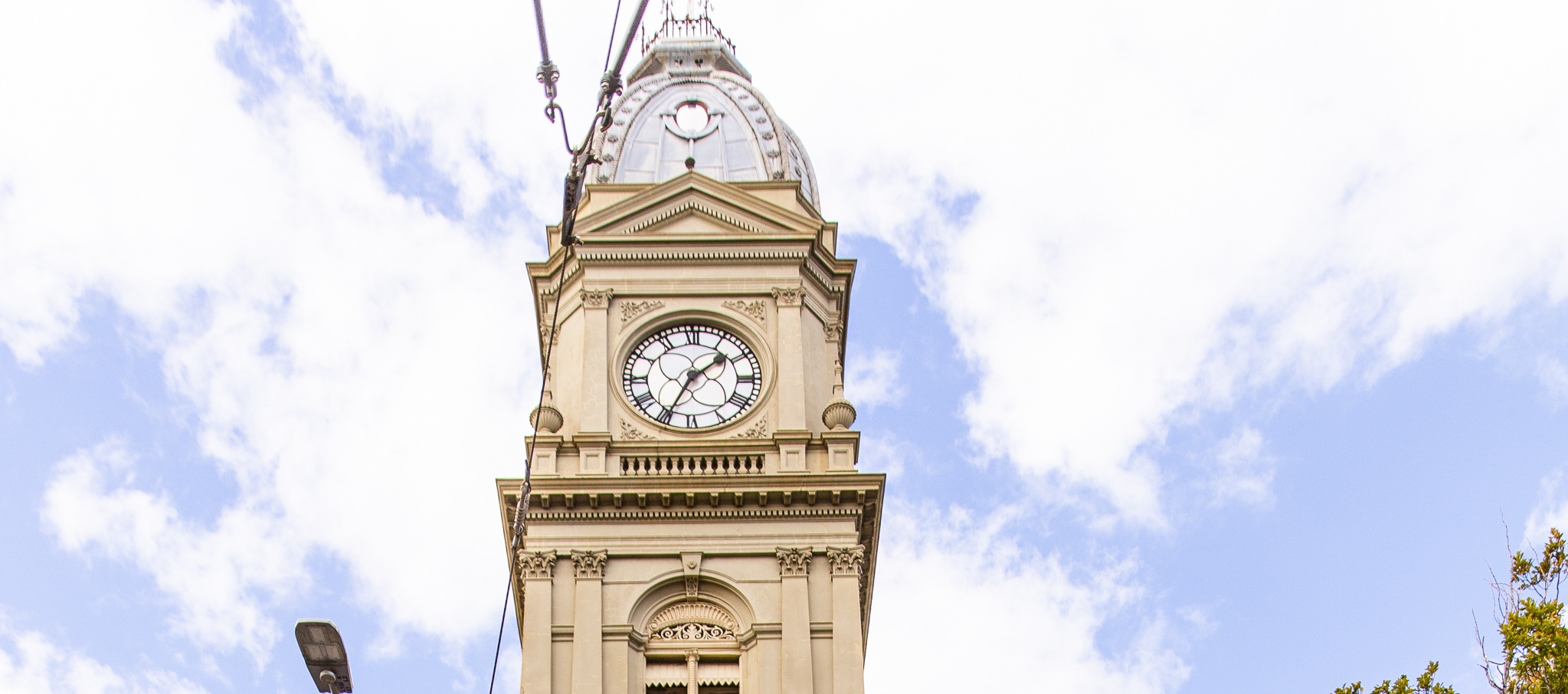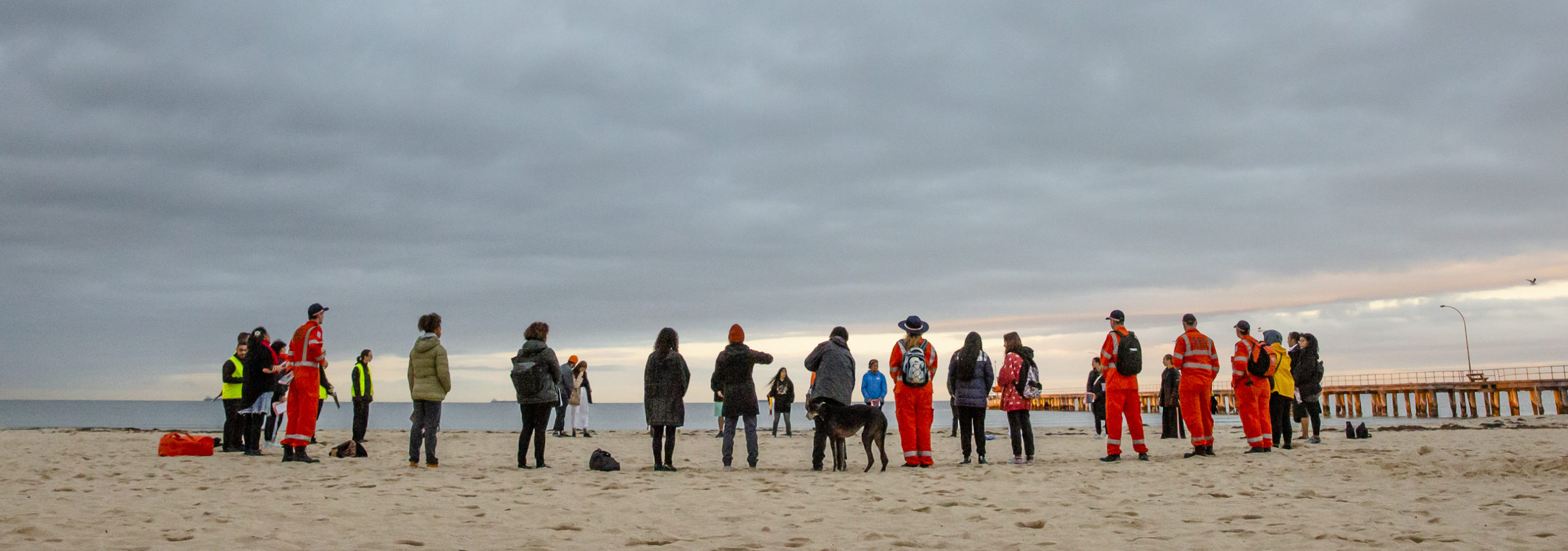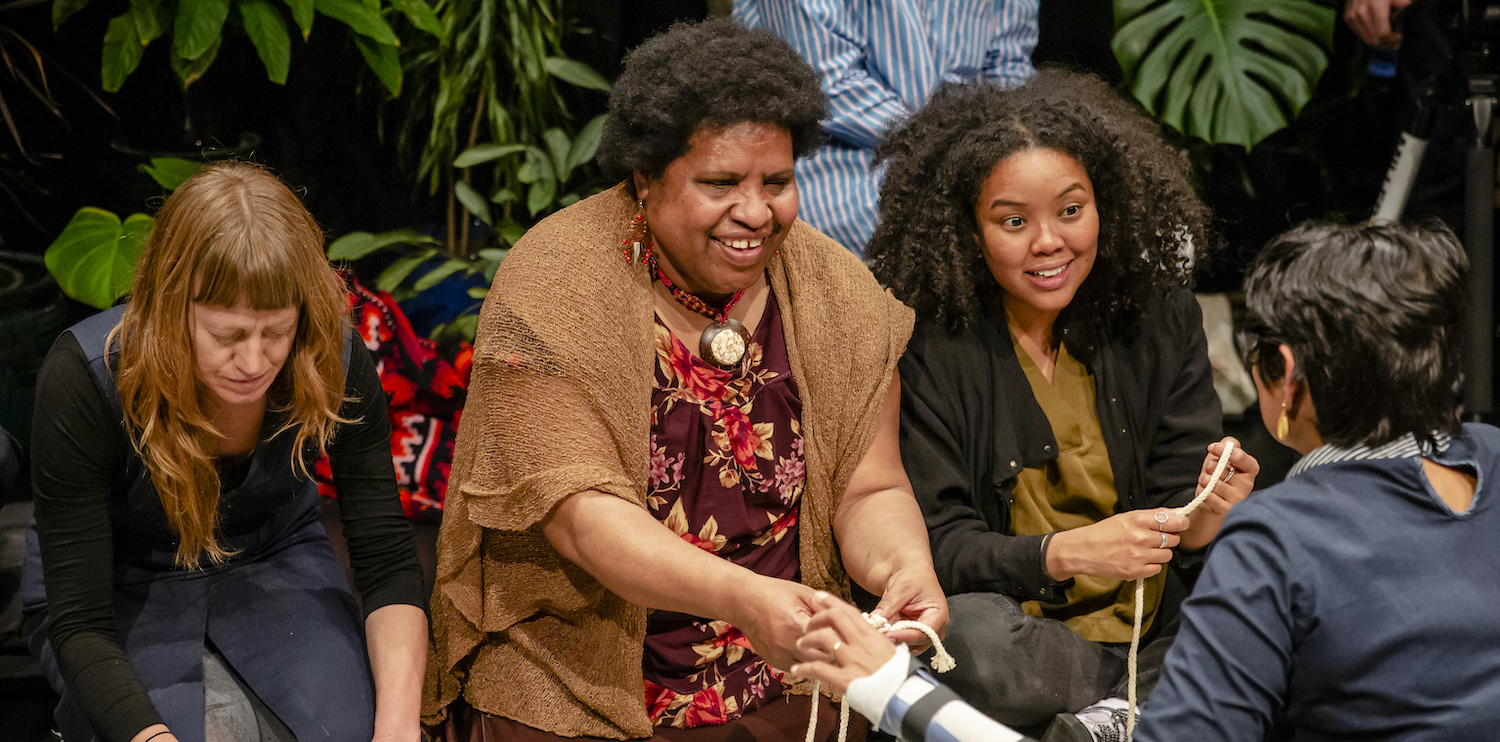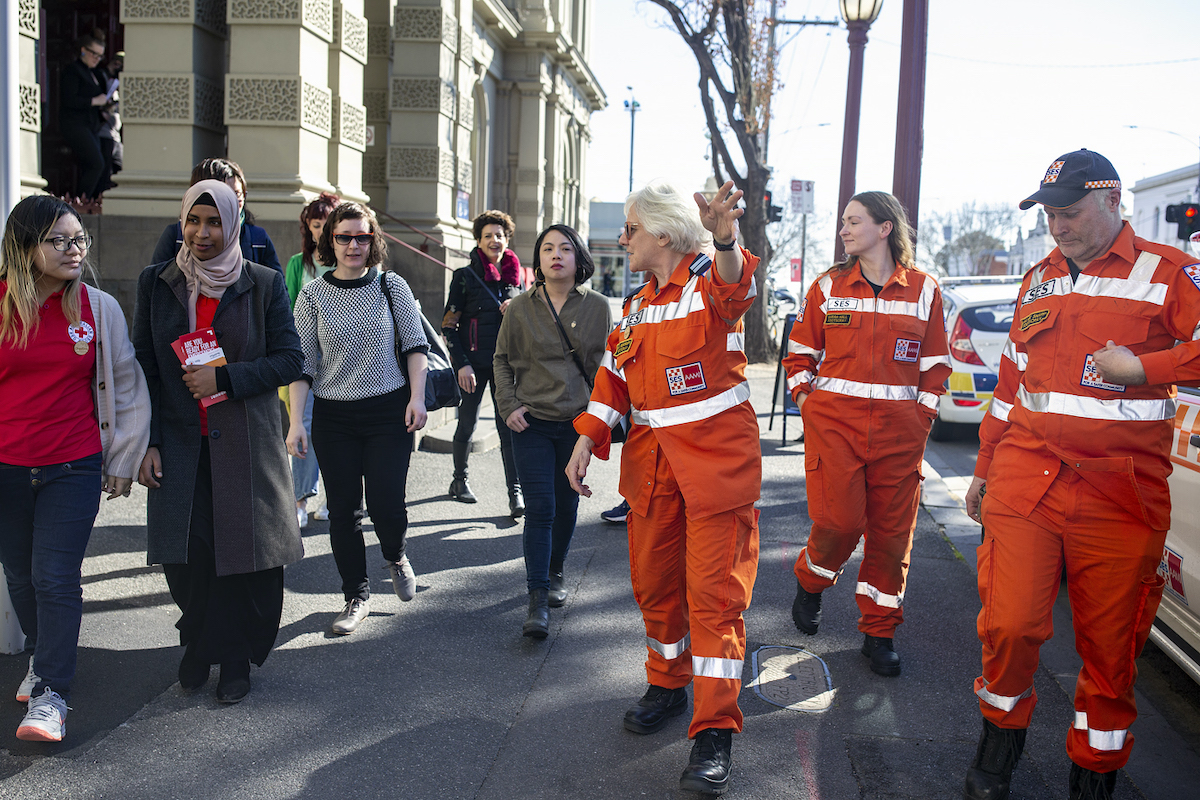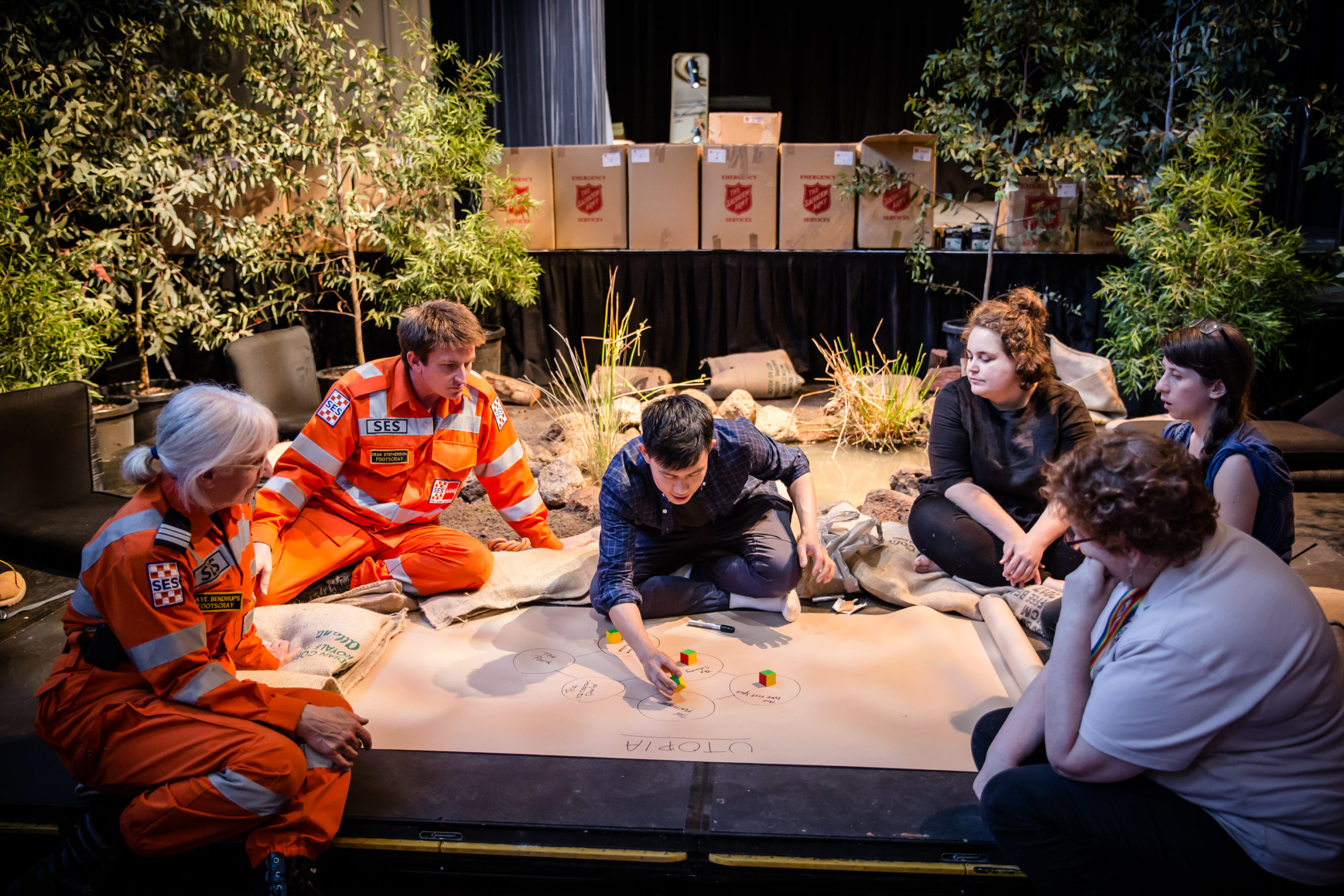Re-directing: Producer Insights
Tara Prowse & Sarah Rowbottam
This piece is from the collection, In The Time of Refuge.
A discussion between Creative Producers, Tara Prowse (Refuge 2016-18) and Sarah Rowbottam (Refuge 2019-21).
Recorded on 30 July 2021
Sarah Rowbottam
Being a producer in Refuge, you’re the pivot point, the relationship holder, relationship nurturer, a conduit between artists and community, emergency staff. You’re also the project manager, fundraiser, and a creative consultant. You’re hosting, having cups of tea with community members…it’s quite an expansive, diverse role.
Tara Prowse
Yeah, totally. I was thinking about the fact that out of that entire network, the only person who has those touchpoints with every single artist, every person, is the Producers – which has been Asha Bee Abraham, Kalyani Mumtaz, Gal Palmer, and us.
A lot of what we do in our jobs in Refuge and as creative producers is see the relationships between things. And in seeing the relationships, whether that’s people or ideas, or structures, we connect people and ideas; and that’s where the whole network map takes life.
Sarah Rowbottam
Latai put a really great word to describe it – rhizomatic. The root system. A family tree. And I think you’re right, the producer is, almost like a director. Not in a traditional sense of what a director is but seeing where that network or that family tree starts to have a pivot point out and around and down, and then maybe back again.
Tara Prowse
Directing is an interesting concept, because I think what I do is actually more “redirecting”. I’m watching how things are happening and I’m not directing that individual project – but if something comes in, I’m able to redirect it to a point or to a place or to a person, and other productive things happen out of that.
Sarah Rowbottam
Because Refuge is a very distinctive project in the arts landscape in Australia, but also probably internationally, what do you think makes the role of the producer distinct compared to other projects?
Tara Prowse
Refuge exists across multiple disciplines and multiple spheres. It works with academics, with emergency services, and people who are quite far from our daily practice in the arts, but we have to be able to pick up on language, and almost use the language of different sectors to be able to bring them into a shared purpose together.
In those first two years, it was really experimenting together, which takes a lot of trust.
Sarah Rowbottam
It does take a lot of trust. I’ve also been thinking about what it means to engage in a conversation over a really long time. Going back to the idea of the family tree, when I first started producing Refuge, I remember being quite amazed that you’re always invited back in. And it doesn’t matter if you’re leading a project or not, just acknowledging the importance of ensuring that people are always invited back in some way, to be part of this generative knowledge exchange people are doing together. Having that inquiry for six years has meant that everyone involved has grown and changed in different ways. This impacts Refuge and then Refuge also impacts everyone in their own lives.
Tara Prowse
Being invited back in is really unusual. It’s hard to set out on a five or six-year program and go, everyone who’s involved at the start will also be invited to be involved all the way through. But I think that goes back to Angharad’s comment about building a community around the problem – as it grows a community around this knowledge-building.
I think that’s really evident with the people who’ve been involved from the beginning, they’ve grown that knowledge together. None of us came in, at the beginning, knowing all of this. It’s not a typical economic model, or a tactical ticket sales model, instead it’s actually going on the journey and bringing people with you. And these are philosophies that Refuge has had at its core.
As the creative producer, we have to be comfortable with the unknown, and the poetry and creativity, but then put a structure together. The rehearsal is the work and you’re making it with the public.
Sarah Rowbottam
The first week that I started at Arts House was the 2018 Pandemic year. I still have strong memories of being in Lee Shang Lun’s project and seeing him throw tennis balls to show how quickly a pandemic can spread. Even the simplest mechanism of throwing tennis balls and the learning I got from that moment was really powerful, and it’s stuck with me.
One of the best ways to prepare for things is by doing. Moving beyond the pamphlets and the information and websites, etc.
Tara Prowse
Yes! That experience of literally being hit on the head with the tennis ball/virus! I remember we had had long conversations with Josh Wright, who was acting in the Artistic Director role at Arts House at that time and with all of the partners about – how do you bring people together in a scenario of a pandemic? And this is the conundrum for an experimental process, because in a pandemic, of course you don’t bring people together. And so, we had consciously taken that decision structurally and curatorially to take a step back with the artists in the audience and look at a problem, rather than be immersed in the problem, which was the model of the first two years.
Sarah Rowbottam
I think it’s interesting how Refuge set up a hypothetical. Also acknowledging that we’re in an ongoing, long, climate crisis. Do you feel like the pandemic has shifted how we think about and articulate Refuge?
Tara Prowse
I think it’s sped it up, if nothing else, but I also think that we were already talking about this before the actual pandemic.
If Refuge continues, or there’s an evolution to it, it could never go back to being about or to looking at a single crisis. I think the Refuge: Displacement series articulated that tragically and beautifully in the years that you curated it: that we don’t live in a world anymore where we can practice or exercise for individual events, rather that they are compounded one upon the other.
Because that’s the world we live in now. So, what does that mean, for Refuge or for future iterations? I think you drew on this in Displacement and the conversation panned out over two or three years. You were relating all of those other environmental factors to the impact on people and prioritizing the voices of those most impacted. Like thinking about the ongoing impacts of colonization, coupled with the impacts of the climate crisis, they can’t be separated from each other. And Refuge takes an intersectional approach to the problem, and it takes an intersectional approach to the, to the knowledges, and to the art forms, and to the people involved. And I think that’s a strength. Yeah, it makes me think back to the flood one as being very simple. It was “just” a localized flood!
Sarah Rowbottam
But I think it was important to start local. To really situate Refuge, and the scenario within a North Melbourne context, and how that really helped focus who it was for, and the community of North Melbourne – the many language groups, lived experiences, people who have been here for over 50 years, people who have recently migrated to Australia. And perhaps, as the years went on, it has also broadened out to a conversation that can be applied within lots of different city contexts as well.
Tara Prowse
I think that’s a fundamental principle or ethical basis for Refuge isn’t it? That it starts, and it always considers the local. If you’re talking about whose land the project is happening on and engaging with elders and knowledges. If you’re talking about the local community, as you’ve described them geographically, I think that’s just part of the core ethics of the project in some way. And that you can’t kind of macro out until you know where you are (locally). I think it’s interesting to think about the evolution of language from the perspective of an arts institution like Arts House and how that shift from the language of audiences to the language of community has happened.
Sarah Rowbottam
Acknowledging that Arts House is not just an arts organization, it’s also a Council program and venue. And what that means is a strength to connect into the different council departments, Christine Drummond and her team in emergency services, health and wellbeing, climate change, resilience, park rangers so many different departments. It’s meant that artists have been able to go to the exercise scenario-planning and the writing teams, and really understand from the inside how a city is thinking about preparedness for those services, and also for community.
Tara Prowse
Really important. And the fact that Arts House as part of City of Melbourne has this civic responsibility, and even just the kind of fabric of the building like the North Melbourne Town Hall being a potential Relief Centre.
Sarah Rowbottam
I’ve heard the story of how Refuge started in so many different ways.
Tara Prowse
I have quite a strong memory of sitting at Arts House, having a conversation with Angharad and a couple of other people, looking at the City of Melbourne’s Emergency Response Plan. And we had it open to a page which listed City of Melbourne relief centres. And Arts House, the North Melbourne Town Hall was on there. And we’re all looking at it, thinking – “Ah, that’s us!” What would that mean? What would that look like? I think we couldn’t look away from that fact.
I feel like the second point that really sticks in my mind when I think about how Refuge came to be, was at the very last day of the first Lab. And we had had all these people like Steve Cameron from Emergency Management Victoria, Christine Drummond from City of Melbourne, the first year’s cohort of artists, Arts House people and community members from local groups. We’d all been on this journey together, where we talked about this and unpacked it together.
I remember it was the last day of the Lab and it was just myself and Angharad and the artists left in the Warehouse at Arts House. And we all were looking at each other with this new knowledge and a sense of urgency and importance, but also responsibility of what to do with this new kind of intersection of knowledge that we had all been discussing for the week. And we almost couldn’t process what it would mean. And it had no shape yet in terms of what it would evolve into later in the year for a public-facing component. And so, we had to role play it. As a group we had to literally step through what it would feel like, be like, if a member of the public entered the Arts House building in this scenario and imagine, for them, in order to make it real.
Sarah Rowbottam
What strikes me from what you’re saying as being fundamental, when I remember Angharad saying is that you didn’t set out to make experiences or works about climate change. It wasn’t pointing at the problems. It was going beyond that. I still feel the sense of urgency. It still feels high.
Tara Prowse
Lorna Hannan has been a guiding voice all the way through and has constantly brought up a perspective that no one else in the cohort of Refuge has, from both local knowledge perspective as an elder, and also just fundamentally who she is as a listener.
I would say that Uncle Larry Walsh, has also been really pivotal in that way. And I think the presence of people with deep knowledge like Lorna and Uncle Larry, and the other Elders who’ve been involved over the years – it also shifts the focus from this kind of immediacy, to something that is a long conversation, you know? And it’s a long, slow conversation and a privileged one. Their involvement has changed the conversation that we were having, fundamentally.
Sarah Rowbottam
A number of artists and even both for us, have talked about Refuge not ending, and that it’s a continuum. And even if Refuge was to continue, or our task was to continue in some way – it may not look the same. But I think also, the conversations and learnings and networks and relationships will always continue well beyond.
Tara Prowse
Yeah, absolutely. And so they should. It was hopefully built into the way the project was devised, that the knowledge and the outcomes aren’t just held by ourselves, that they’ve gone in all directions. That has been super central. The idea that it’s not just artist-led, but also that it’s held and owned by a huge amount of people who feel a deep investment in it. And that Arts House is not a gatekeeper to that.
Header Image: Tara Prowse, Refuge 2017: Heatwave, Photo by Bryony Jackson
Image description: A woman wearing a hi-vis jacket with ‘EXERCISE’ written on it smiles as she hands out ice-creams from a white box marked ‘Local’ in black text. A young girl in a blue polkadot dress holds an ice-cream in one hand as another woman takes an ice-cream from the box. There are more people in hi-vis vests in the background.
